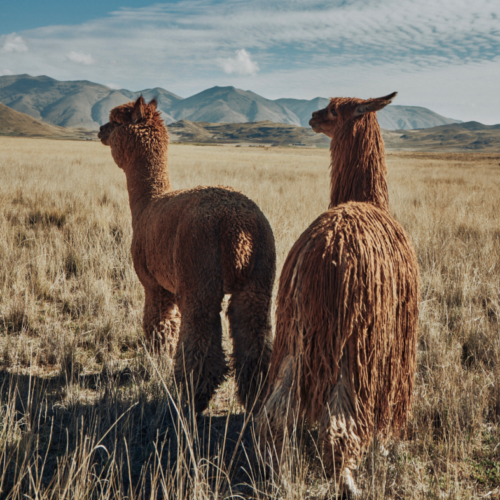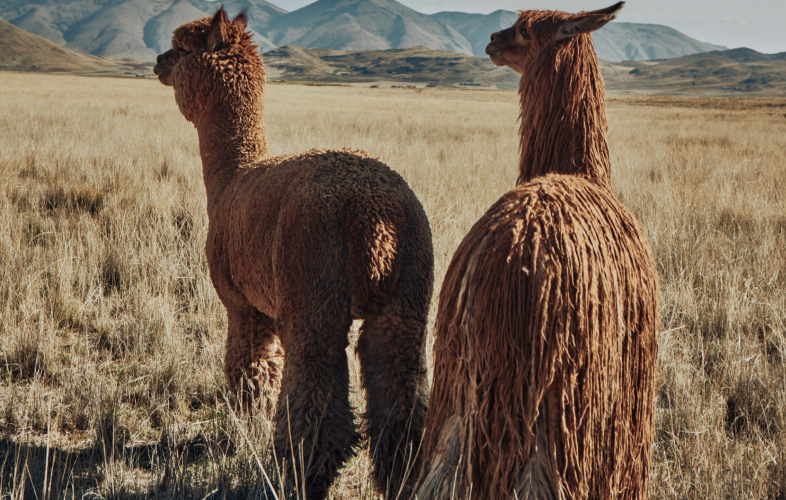Leaving Arequipa at 5am we took an 8-hour drive to Cusco where the climate becomes colder, and roads can be tricky to drive. It started snowing enroute and we began to feel some of the effects of the altitude, Cusco is around 4000 metres above sea level, but our guide had prepared us with tips on drinking plenty of water, and getting good rest, as well as moving slowly on our arrival.
Incalpaca provided us with some beautiful mountain cabins for our stay and on arrival we were given a typical Peruvian meal and met some of the baby alpacas on the farm, which needless to say were incredibly cute and fluffy. Incalpaca’s herd are free-roaming, but are raised by many of the local people who are employed there. The team tell us that raising alpaca as a livelihood is not as popular as it once was, and they are wanting to get more young people involved in the industry. This is part of the reason they build the cabins in Cusco, to provide incentives for local employees.
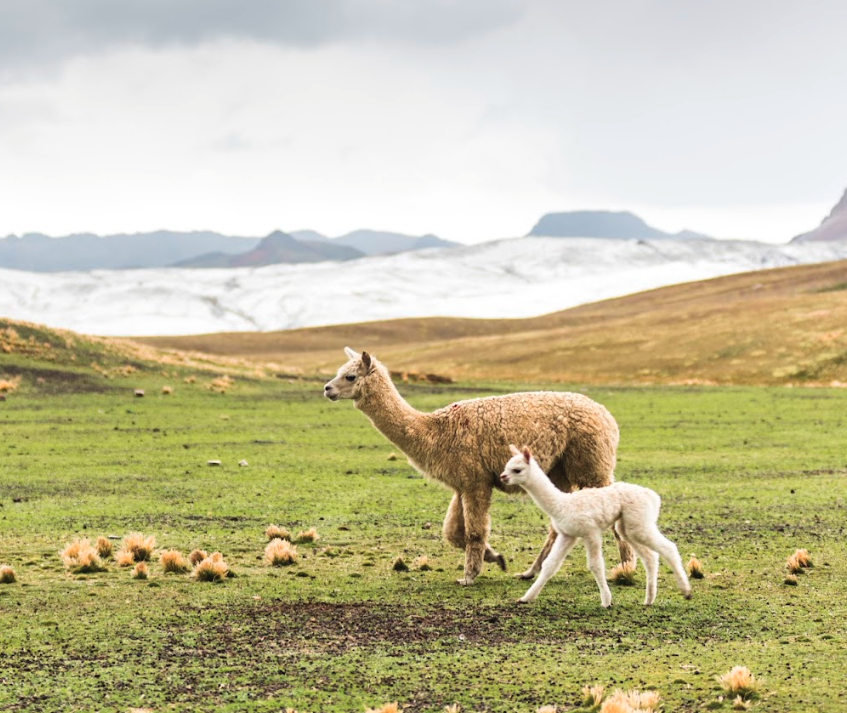
Incalpaca has been creating fibbers and garments from alpaca fur since the 1980’s, and their Cusco farm is very well-established. Not only do they employ many local people to help with raising and caring for the animals, as well as processing the fur, they also work with a PhD scientist, Alan, who is looking at the best genetic pairings and modifications for the most premium, soft alpaca fur. We were shown around the on-site laboratory where this takes place, and learned more about the fur. To the untrained eye alpaca fur is generally white, brown, gray or black, but on seeing the animals and the fur using a special tool, you can see there’s lots of a little variations which means that the fibbers and the resulting garments are completely unique.
Incalpaca have five production lines: accessories, home line, knitwear, outerwear and woven fabrics, and all these lines are created with sustainability in mind.
“Today, in a world concerned with the environment and fair trade conditions, we believe that sustainability is the only way.”
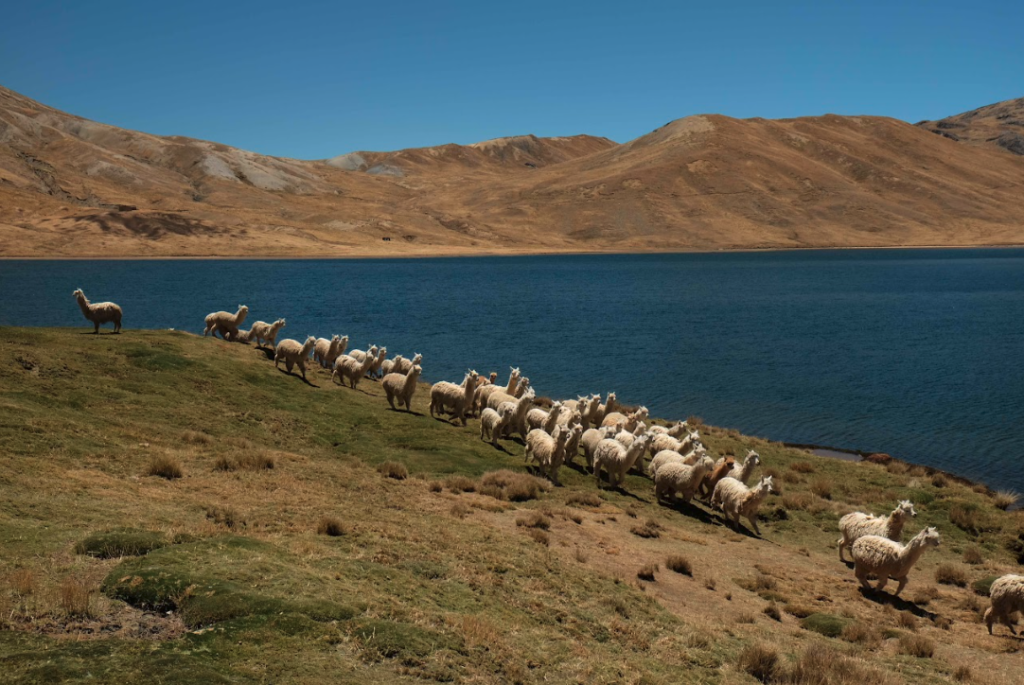
Alpaca is in fact an incredibly sustainable fiber; firstly, the animals do not need to be killed for their fur, instead the animals are shorn ahead of the summer when they do not need their thick coats for warmth, as the seasons change to fall, a new coat regrows. As livestock, alpaca are also very environmentally friendly, they do not uproot vegetation, nor damage the land or soils, and they require a much lower food intake than typical livestock such as sheep or cows (particularly as they are not being “fattened” for consumption). By nature, they also don’t take up other valuable land and resources; their natural habitat is thousands of metres above sea level where they consume only natural water sources, and the land is not suitable for agriculture anyway.
The fibbers created from the alpaca fur can be left undyed, or colored to produce the vibrant garments associated with Peru. The fibbers are worked into various different textures to make chic outerwear, gorgeous casual sweaters, ponchos and chalinas (scarves). See more of their collection here.
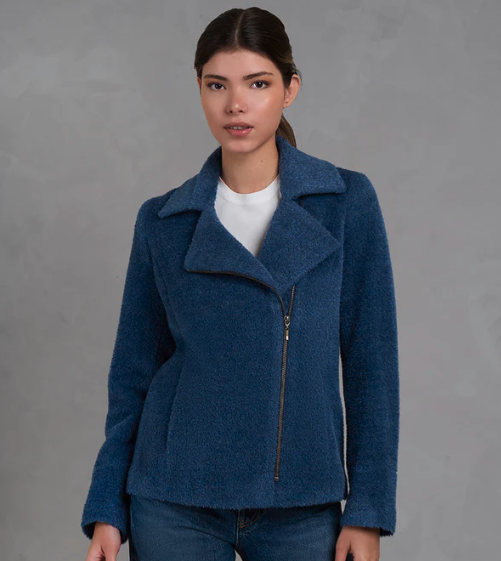
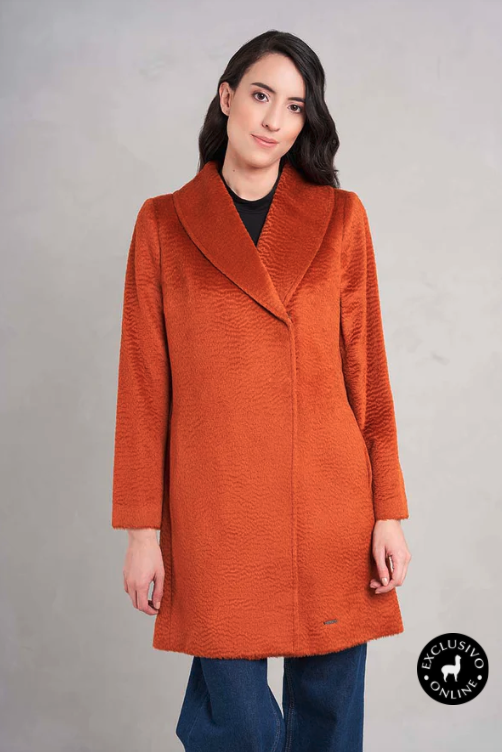
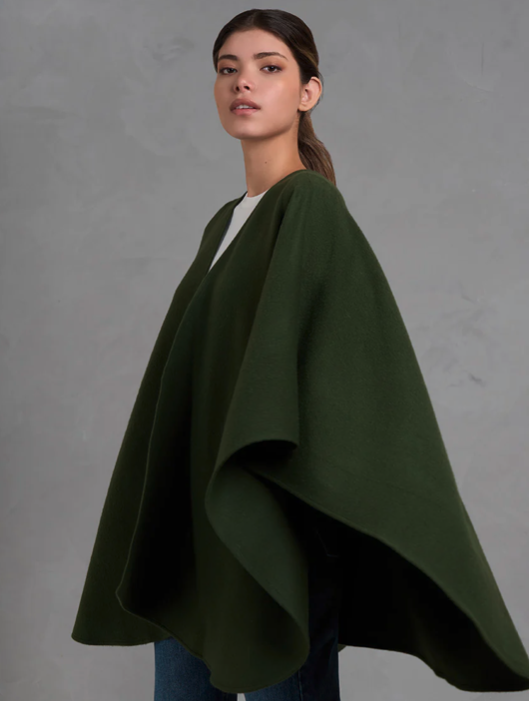
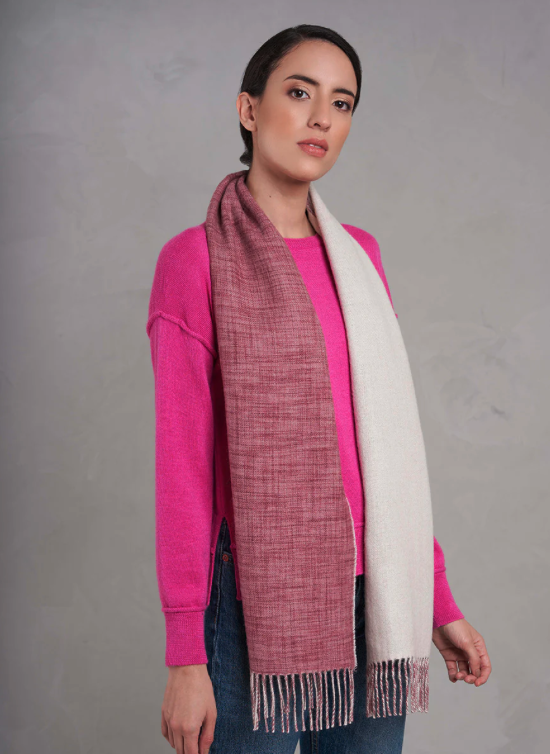
With thanks to Incalpaca for sharing their story, and introducing XOXO Fashion Magazine to such a culturally important, sustainable export for Peru.

